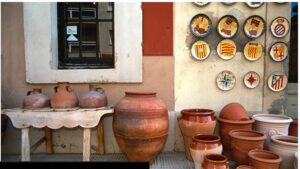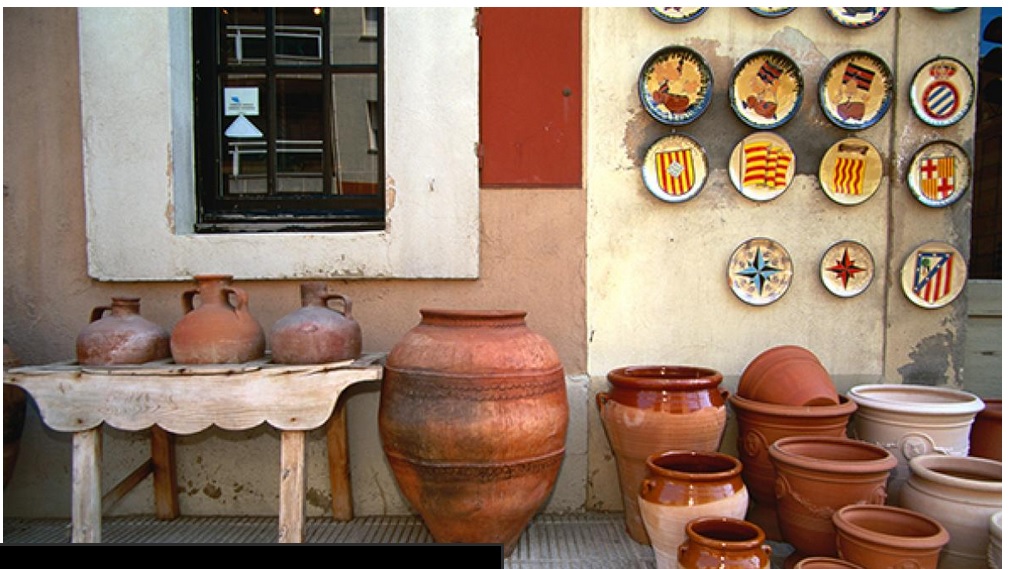 This article in National Geographic looks at the history and story of the famous ceramics of La Bisbal.
This article in National Geographic looks at the history and story of the famous ceramics of La Bisbal.
“It’s a warm morning in La Bisbal d’Empordà, a small town in the Costa Brava region of northeastern Spain, located about 80 miles up the Mediterranean coast from Barcelona, near the Franco-Spanish border.
Within moments of arriving, I’m immediately taken with La Bisbal—its colorful houses with wisteria-traced walls, lemon trees heavy with fruit, and centuries-old stone bridge spanning the dry bed of the River Daró.
But then my eyes settle on what this Catalan town is famous for—in front of the melange of shops lining main street Carrer de L’Aigüeta, the sidewalks have been piled high with brightly painted terra cotta tiles, as well as plates, pitchers, flowerpots, and even piggy banks.
La Bisbal is one of the key ceramic centers of Catalonia, with a pottery industry dating back centuries.
With the Terracotta Museum—which is housed in an historical ceramic tile factory—closed for restoration work during my visit, I begin at Puigdemont, one of the oldest artisanal pottery workshops in La Bisbal.”
They offer free tours, and I’m greeted in the front showroom by Núria Puigdemont, who is soon leading me through an open, sunlit courtyard into their expansive workspace. She, along with her two sisters, Maria and Rosa Maria, give me a crash course in La Bisbal’s pottery tradition, including their family’s role in it.
“Our grandparents founded the company in 1930,” Núria says. “Then my parents—after school, we would come here and our parents taught us—and now us.”
We start with the heart of it all—in a corner of the workshop where a number of wooden palettes rest on the floor, covered in black plastic. With a rustle of the dusty sheets, there is the grand reveal: block after block of rich red clay delivered straight from pits whose proximity to La Bisbal provided the impetus for its ceramic trajectory.


Recent Comments